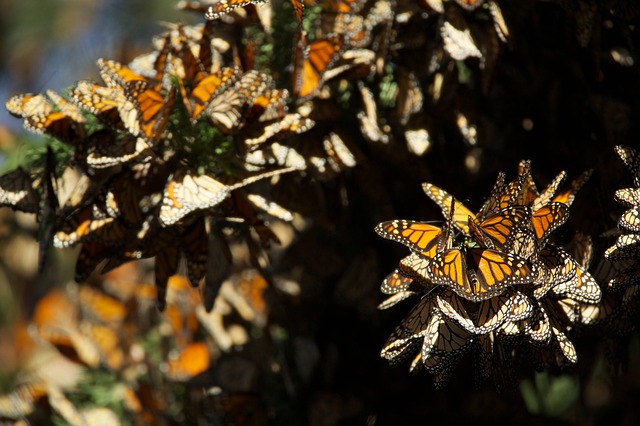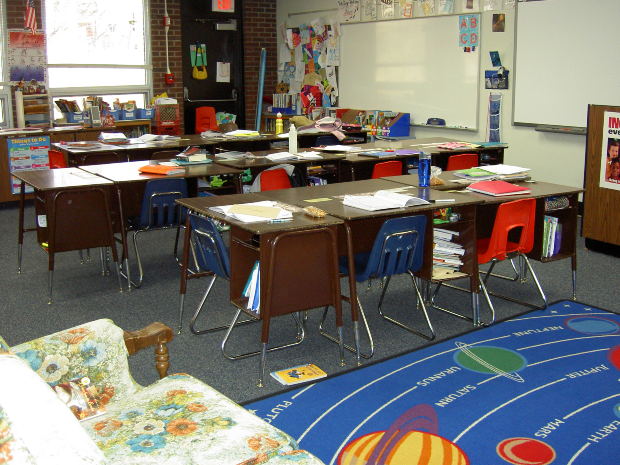
Skeeze, pixabay.com
Nature operates complex systems with awe-inspiring success. We see such systems in Monarch butterfly migration, spotted hyena hunting behavior, the day-to-day life of a honeybee colony, everywhere in nature.
The science of complexity tells us these systems cannot be fully understood when examined in isolation because they function as part of a larger whole. Perhaps surprising to us, complex systems flourish right near the edge of chaos. That’s how nature works.
Any self-organizing system, including a human being, is exquisitely cued to maintain equilibrium. Yet that equilibrium can’t hold for long. That’s a good thing. Consider the pulse fluttering in your wrist. The heart rates of healthy young people are highly variable while, in contrast, the beat of a diseased or very elderly heart is much more regular. An overly stable system is rigid, unchanging, and eventually collapses.
We are attuned to minute fluctuations in our bodies as well as in the world around us and are capable of almost infinite responses to regain balance. Some of these responses occur at a level we can’t consciously detect. Change or disturbance at any level functions as a stimulus to create new options.
Each time we are destabilized, these elegant and complex processes at our disposal give us ways to regain balance. The more potential responses we have, the greater our adaptability.
To me, this has everything to do with education. It tells me that we’re perfectly suited to expand our learning infinitely outward as long as we are not confined by sameness, limited variables, and inflexibility.
As an example, lets compare a curriculum used in a second grade classroom to a flock of Canada geese migrating north. It seems obvious that the geese are all the same species heading in the same direction, surely far less complex than an up-to-date curriculum supported by all sorts of educational resources and a well-trained teacher. But lets look more closely. Geese are self-organized into a highly adaptive system while the curriculum is not. The geese choose to migrate based on a number of factors. Unlike curricula, geese don’t operate by standardized data nor is there any flock leader telling them when it’s time to leave.
Geese fly in V-shaped formations. Flying together is far less physically stressful than flying alone. Each bird flies slightly ahead of the next bird so there’s substantially less wind resistance. Because they’re flying in formation, their wings need to flap less frequently and their heart rates stay lower, helping them conserve energy for the long flight. Flying in formation helps the birds communicate and follow the route more efficiently. They also take turns leading at the head of the V, the most difficult position. Each lead goose is smoothly replaced by another member of the flock after a short turn. That way no single goose is more essential than any other for the flock’s migration. The entire flock is able to respond and adapt to a whole range of conditions.

John Benson, wikimedia commons
In contrast, that second grade curriculum is tightly structured and largely inflexible. It was written thousands of miles away, far removed from the day-to-day interests and concerns of the students or their teacher. Each lesson is broken down into rubrics to better measure adherence to specific standards and is mandated by lawmakers who are heavily influenced by the $81,523,904 spent by industry lobbyists in one year. Students and their teacher are judged by tests put in place by education corporations, even though improved test scores are not associated with success in adulthood. Learning cued to real world uses, learning that is based on readiness rather than rigid timetables, is real learning.
Nearly every variable is limited by the curriculum and overall school structure. The most enthusiastic and dedicated teacher is afforded no real time to let students explore subjects in greater depth or to try innovative educational approaches. The fewer potential variables, the more it adaptability is diminished. Remember, an overly stable system is rigid, unchanging, and eventually collapses.

jdurham, morguefile.com
Instead, a truly viable education is modeled on the natural world. After all, we are living natural systems ourselves.
What principles are found in sustainable ecosystems?
- cross-pollination
- diversity
- self-assembly
- interdependence
- adaption
- balance
- an undeniable tendency toward beauty
Such principles support and enhance life. These principles can form the core of a living system of education as well. All we need to add is joy.
Based on an excerpt from Free Range Learning.

Reblogged this on Never Less Than Everything and commented:
Compelling and insighful!
LikeLiked by 1 person
wonderful!
LikeLiked by 2 people
Beautiful. Funny how every time we try to control nature, it throws us a curve ball and instead we try to decipher its patterns. If education allowed us to decipher student patterns more naturally, we might get farther.
LikeLiked by 2 people
Reblogged this on New Industry School Ghana and commented:
Educational systems are revolving, interdependent on locality, and require the fertilizer of new material to keep them growing. Testing can be a means of motivating students, but really educator should focus on building success skills for the future use of the student.
LikeLiked by 1 person
This is one of the guiding principles of permaculture and really at the end of the day we must have rocks in our heads not to follow it in our systems,…unfortunately?
LikeLiked by 2 people
I’m convinced such natural principles should be the essence of human activities, from gardening to government. Living them out in our own lives is a start.
BTW, readers seeing Ian’s comment might want to click over to view his extraordinary paintings. You can find them here: ianhamlin.co.nz/artist/ianhaml/Artworks/
LikeLiked by 2 people
Reblogged this on Seedling and commented:
This is an incredibly thoughtful way to connect nature to our children’s learning, and I believe Laura is absolutely correct in her connections.
LikeLike
Sorry, I reblogged this on the wrong blog, and deleted it, wanting to put it on my homeschool blog, but it won’t let me, I will try again later because I loved this post!
LikeLike